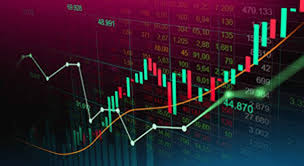
The Forex market, also known as the foreign exchange market, is the largest financial market in the world. With trillions of dollars traded daily, it provides an unparalleled opportunity for traders to capitalize on currency fluctuations. Whether you are a seasoned veteran or a curious newcomer, understanding the intricacies of Forex trading is essential for achieving success. This article will delve into the key concepts, strategies, and tools available to help you navigate the Forex market effectively. Among various trading platforms, forex market trading MT4 Forex Brokers stand out for their user-friendly interface and robust features.
What is Forex Trading?
Forex trading involves the exchange of one currency for another in an attempt to profit from changes in exchange rates. The Forex market operates 24 hours a day, five days a week, allowing traders to engage in buying and selling currencies at any time. Unlike stock markets, which are limited to specific hours, Forex provides flexibility and accessibility. Major currency pairs include EUR/USD, GBP/JPY, and USD/CHF, among others.
Understanding Currency Pairs
In Forex trading, currencies are quoted in pairs, indicating how much of the quote currency is needed to buy one unit of the base currency. For example, in the EUR/USD pair, the Euro is the base currency and the US Dollar is the quote currency. If the pair is trading at 1.20, it means that 1 Euro can be exchanged for 1.20 US Dollars. Currency pairs are generally categorized into three types:
- Major Pairs: These include the most traded currencies globally, such as EUR/USD and USD/JPY.
- Minor Pairs: Pairs that do not involve the US Dollar, such as EUR/GBP and AUD/NZD, are considered less liquid.
- Exotic Pairs: These pairs consist of a major currency and a currency from an emerging market, like USD/TRY (Turkish Lira).
The Mechanics of Forex Trading
When trading in the Forex market, traders can either buy (go long) or sell (go short) a currency pair. Buying means that the trader expects the value of the base currency to rise against the quote currency, while selling indicates an expectation that the base currency will fall in value. This ability to profit from both rising and falling markets is one of the appealing aspects of Forex trading.
Fundamental Analysis
Successful Forex trading often relies on fundamental analysis, which involves assessing economic indicators and data to forecast currency movements. Key economic indicators include:
- Interest Rates: Central banks set interest rates, influencing currency valuation.
- Gross Domestic Product (GDP): A nation’s economic performance can impact its currency strength.
- Employment Figures: Job growth and unemployment rates can affect consumer spending and economic health.
- Inflation Rates: Currency purchasing power is influenced by inflation levels.
Traders should stay updated on economic news releases, which can lead to increased volatility in the Forex market.
Technical Analysis
In addition to fundamental analysis, traders often use technical analysis to identify market trends and potential trading opportunities. Technical analysis involves analyzing price charts, patterns, and indicators rather than focusing on economic data. Some key components of technical analysis include:
- Support and Resistance Levels: These are critical price levels where the market tends to reverse direction.
- Moving Averages: Moving averages help smooth out price data to identify trends over specific periods.
- Indicators: Tools like the Relative Strength Index (RSI), Moving Average Convergence Divergence (MACD), and Bollinger Bands provide insights into market conditions.
Learning to read charts and interpret signals takes practice but can significantly enhance trading success.
Developing a Trading Strategy
A well-defined trading strategy is essential for long-term success in the Forex market. Here are a few key steps to developing a robust trading strategy:
- Set Clear Goals: Determine what you want to achieve with your trading, whether it’s short-term gains or long-term investments.
- Choose a Trading Style: Different styles, such as scalping (short-term trades), day trading, or swing trading, cater to different risk tolerances and time commitments.
- Risk Management: Define how much of your capital you are willing to risk on each trade. A common guideline is to risk no more than 1-2% of your trading account on a single trade.
- Backtesting: Before executing a strategy live, test it against historical data to see how it would have performed.
Risk Management
Risk management is a crucial aspect of successful Forex trading. It involves safeguarding your trading capital by implementing appropriate measures. Here are several risk management strategies:
- Setting Stop-Loss Orders: This allows traders to set a predetermined exit point to minimize losses if the market moves against them.
- Using Take-Profit Orders: These orders enable traders to secure profits once a currency reaches a specified target price.
- Diversification: Spreading investments across various currency pairs can help mitigate risk.
Choosing the Right Broker
Selecting a reliable Forex broker is paramount for successful trading. Look for brokers that are regulated, offer competitive spreads, and provide a user-friendly trading platform. Popular platforms such as MetaTrader 4 (MT4) and MetaTrader 5 (MT5) provide various tools and features for traders. Many traders find MT4 Forex Brokers to be particularly beneficial due to their extensive customization options and automated trading capabilities.
Staying Informed in the Forex Market
Finally, staying informed and continuously learning is vital in the dynamic world of Forex trading. Engage with educational resources, online courses, webinars, and community forums to enhance your knowledge. Following market news, economic reports, and expert analyses can provide valuable insights that will inform your trading decisions.
Conclusion
Forex trading offers exciting opportunities for profit, but it comes with its risks. By understanding the fundamentals, employing sound trading strategies, managing risk effectively, and staying informed, traders can navigate this complex market with greater confidence. Whether you choose to trade currency pairs for a living or as a side endeavor, developing your skills over time will pave the way to success in the Forex market.
